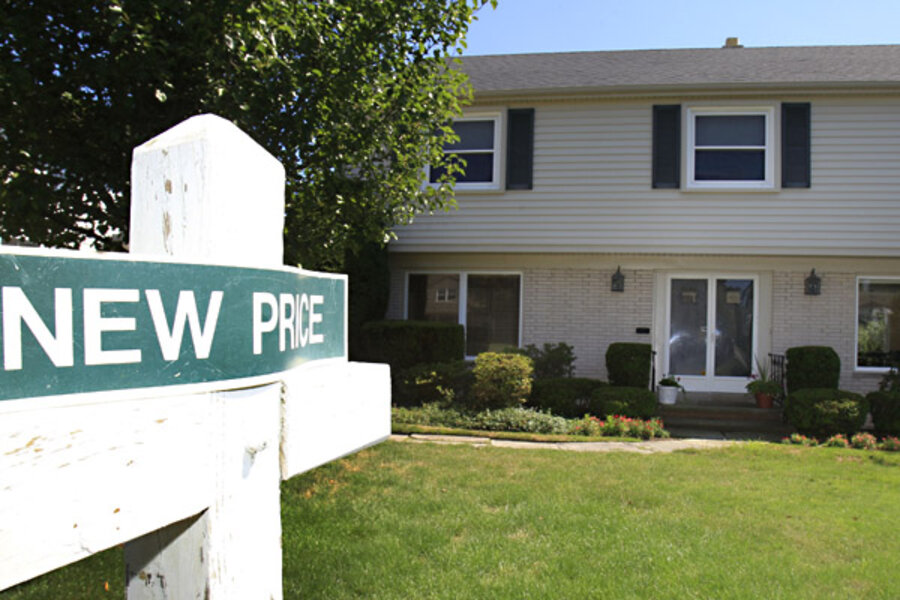Mortgage refinancing: The White House wants to make it easier
Loading...
It’s now possible to find mortgage rates lower than 3.5 percent for a 30-year fixed mortgage. If your current rate is significantly higher, you could be thousands of dollars richer by refinancing. That is, if you can refinance.
Many homeowners today would love to refinance, but credit is tight, and so is equity. There are established government programs in place to help borrowers with certain types of mortgages in certain situations, but if you don’t meet the narrow criteria, you’re out of luck.
But if the White House has its way, that could soon change.
President Obama has proposed a plan to allow homeowners to refinance regardless of their mortgage type – even if they’re underwater on the loan. Read on for more information about the proposed program – plus some info on the refinancing programs already available…
Now let’s add some additional information about the proposed plan, as well as other refinancing plans you may already qualify for.
If approved, the new plan will help all homeowners. The first part allows you to refinance any type of loan – even if you’re underwater on your mortgage – providing you meet a few requirements. According to the White House, homeowners will save $3,000 a year on average.
The eligibility requirements are listed on the White House Blog:
- No missed mortgage payments in the last six months, and no more than one missed payment in the six months before that
- A current FICO score of at least 580 (approximately 9 in 10 borrowers meet this requirement)
- The loan being refinanced is not worth more than area median home values, as determined by FHA-conforming loan limits
- The loan being refinanced is for a single-family, owner-occupied principal residence (to be sure the program benefits responsible homeowners trying to stay in their homes)
The plan also calls for a more streamlined refinancing process. Homeowners will have a simplified application process, easier requirements, and no appraisal costs. A bill sponsored by Senator Diane Feinstein [D-CA], the Expanding Refinancing Opportunities Act, would extend streamlined refinancing to families whose loans are not guaranteed by the government.
Congressional approval is tough to come by with today’s partisan politics, so hapless homeowners will have to hope for the best. But if you need help now, there are a few refinancing programs already available…
1. The Home Affordable Refinance Program (HARP)
The Home Affordable Refinance Program helps underwater homeowners with Fannie Mae and Freddie Mac mortgages refinance into a better mortgage – like refinancing an adjustable-rate mortgage into a fixed-rate mortgage, or refinancing from a fixed-rate mortgage to a new one with a lower interest rate. To be eligible for HARP:
- Freddie Mac or Fannie Mae must own or guarantee the mortgage, and it must have been sold to them on or before May 31, 2009
- Your loan-to-value ratio must be greater than 80 percent
- You must be current on your mortgage with a good payment history in the last year
- The mortgage can’t have already been refinanced via a HARP program. One exception: if it’s a Fannie Mae loan refinanced from March-May, 2009.
2. Home Affordable Modification Program (HAMP)
If you have a government-backed loan, but you’re behind on your mortgage payments, you may qualify for the Home Affordable Modification Program. While not a traditional refinancing program, HAMP readjusts your mortgage payments to a lower (and more affordable) rate. You may qualify for HAMP if:
- You have a mortgage backed by Fannie Mae, Freddie Mac, or a mortgage lender registered with the U.S. Treasury
- You received your mortgage on or before Jan. 1, 2009
- You owe less than $729,750
- You have a financial hardship and are either currently delinquent on your mortgage payments or at risk of becoming delinquent
- You have a job and proof of income
- You haven’t been convicted of a felony related to finance or real estate in the last 10 years
3. FHA Short Refinance
If you don’t have a government-backed loan, you may qualify for a refinancing program that will lower your monthly payments. According to the Making Home Affordable site, the FHA Short Refinance program allows conventional mortgage holders to refinance to an FHA loan. Lenders must reduce the amount you owe to no more than 97.75 percent of the home’s value. You may qualify for the program if:
- You have a mortgage that is not backed by the FHA, Fannie Mae, Freddie Mac, the VA, or the USDA
- You are underwater on your mortgage
- You are current on your mortgage payments
- You meet standard FHA underwriting requirements
- Your debt is less than 55 percent of your monthly income
- You haven’t been convicted of a financial or real estate-related felony in the last 10 years
4. Traditional refinancing
While many lenders won’t refinance an underwater mortgage – lenders typically require some equity in the home – the current housing market has made some lenders more flexible. If you’re at risk of foreclosure, your lender may be willing to refinance your loan or give you another alternative to avoid losing your home.
The types of programs available (and the requirements) vary by lender. The first step to refinancing your mortgage is to talk to a housing counselor. HUD provides housing counseling services for free. A housing counselor can help you determine your options, help you gather the paperwork you need, and help you create a budget to stay on track with your mortgage payments.
To find a housing counselor, use HUD’s Foreclosure Avoidance Counseling map or call 888-995-HOPE – the toll-free service is available 24 hours a day.
Angela Colley is a writer for Money Talks News, a consumer/personal finance TV news feature that airs in about 80 cities as well as around the Web. This column first appeared in Money Talks News.







